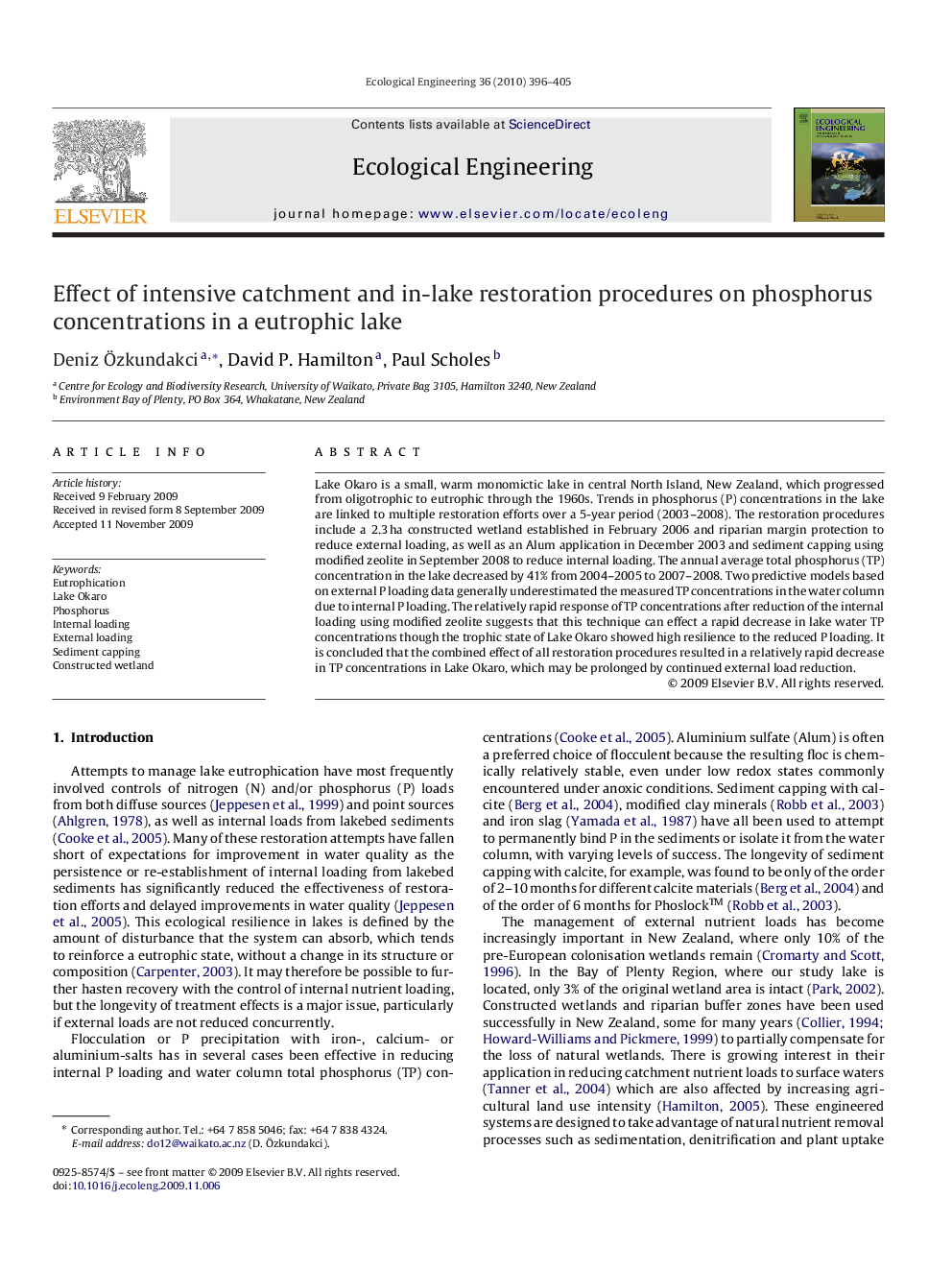| Article ID | Journal | Published Year | Pages | File Type |
|---|---|---|---|---|
| 4390745 | Ecological Engineering | 2010 | 10 Pages |
Lake Okaro is a small, warm monomictic lake in central North Island, New Zealand, which progressed from oligotrophic to eutrophic through the 1960s. Trends in phosphorus (P) concentrations in the lake are linked to multiple restoration efforts over a 5-year period (2003–2008). The restoration procedures include a 2.3 ha constructed wetland established in February 2006 and riparian margin protection to reduce external loading, as well as an Alum application in December 2003 and sediment capping using modified zeolite in September 2008 to reduce internal loading. The annual average total phosphorus (TP) concentration in the lake decreased by 41% from 2004–2005 to 2007–2008. Two predictive models based on external P loading data generally underestimated the measured TP concentrations in the water column due to internal P loading. The relatively rapid response of TP concentrations after reduction of the internal loading using modified zeolite suggests that this technique can effect a rapid decrease in lake water TP concentrations though the trophic state of Lake Okaro showed high resilience to the reduced P loading. It is concluded that the combined effect of all restoration procedures resulted in a relatively rapid decrease in TP concentrations in Lake Okaro, which may be prolonged by continued external load reduction.
